Fertiliser spreaders are one of the most misunderstood tools in gardening, often seen as old fashioned ways to spread chemical fertilisers around lawns.
In fact, most modern fertiliser spreaders are designed to cope with seed distribution, organic feeds, and even salt and sand spreading, so are far more capable of supporting organic garden management than you might think.
In this article, we’re going to talk through the many uses of fertiliser spreaders, and share our reviews of the best fertiliser spreaders you can buy right now, to give you a nudge in the right direction.
More...
Best Value


Premium Choice

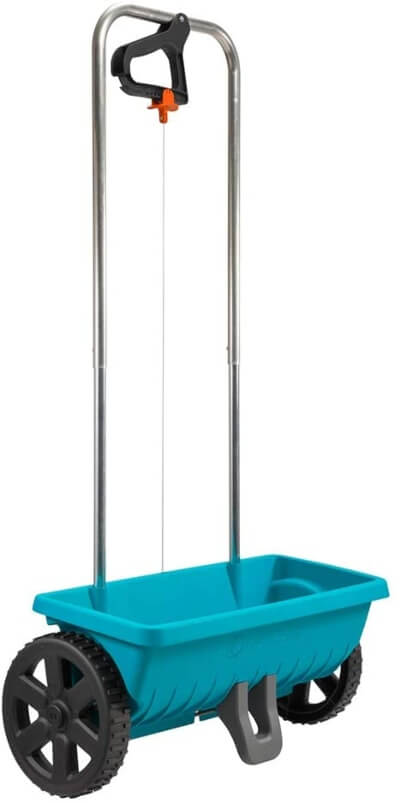
Fertiliser Spreader for 2025
Product | Our Rating | Price | |
|---|---|---|---|
1. Scotts Turf Builder Mini Broadcast Spreader | 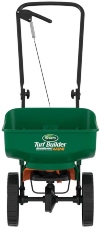 |  | |
2. Gardena Large Fertiliser Spreader | 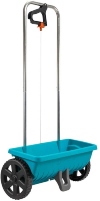 |  | |
3. Gardena Handheld Fertiliser Spreader | 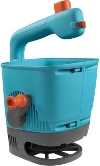 | ||
4. PlantCraft 30kg Tow Behind Broadcast Spreader |  | ||
5. PlantCraft 90kg Tow Behind Broadcast Spreader |  | ||
6. Yard Tuff YTF-25SS Shoulder Spreader | 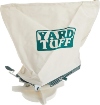 |
What are Fertiliser Spreaders?
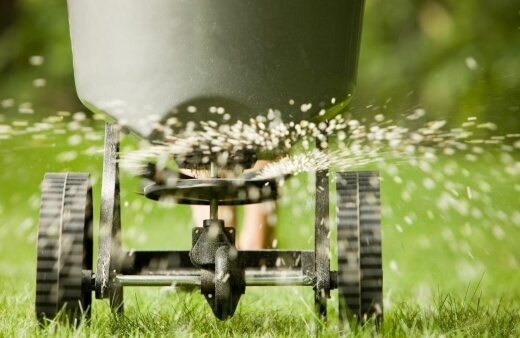
Fertiliser spreaders are designed to make gardening easier. Any lawn, especially in the hot Australian climate, needs extra care and attention, so as well as regular irrigation, you’ll need an annual fertiliser as an absolute minimum to keep your lawns looking lush and green.
Some types of fertiliser spreaders, that we’ll discuss later, are designed for wider garden uses, in beds and borders as well as open lawns, but they all share the same basic purpose; make gardening simpler.
Fertiliser spreaders are surprisingly varied. For a simple product to come in so many shapes and sizes is fairly unusual, but that’s because every plant in your garden needs feeding in different ways, and every garden is a unique shape and size.
In our fertiliser spreader buyer’s guide, we’re going to start to unpick what to look out for when buying one of these brilliant and time-saving tools.
What to Look For in a Fertiliser Spreader

There are two choices to make when finding a new fertiliser spreader; power, and space. First, how large is your garden? If you’ve got a huge estate, you’ll need a huge fertiliser spreader that is attached to the back of your lawn tractor, but for small urban spaces, a handheld spreader can be more than good enough.
Secondly, you need to think about power:
Are handheld, battery, or push fertiliser spreaders best?
Fertiliser spreaders are incredibly simple to operate. When choosing a new fertiliser spreader, first decide how much effort you want to put in.
You can save a lot of money by buying a manual spreader with a rotary handle that you spin to distribute feed, while electric spreaders are far easier to use, but usually cost at least double the price of manual spreaders.
Fertiliser Spreader Capacity
For small lawns and gardens (20m x 10m) a handheld spreader is more than enough, covering between 100 and 200m2 from one fill, but you can get better results with a drop spreader that might exceed your needs, but gives better results.
For really big spaces, you’ll need a large hopper, like agricultural fertiliser spreaders with capacities of at least 30kg
Different Types of Fertiliser Spreaders

Fertiliser spreaders are designed to speed up the distribution of fertiliser around lawns, agricultural settings, and garden borders. They work in one of two ways; drop, and broadcast.


Get Your Free Guide:
Master Growing Australian Natives eBook
A Must Have Complete Guide for Every Australian Garden
Get Your Free Guide:
Master Growing Australian Natives eBook
A Must Have Complete Guide for Every Australian Garden
Broadcast spreading is the faster option, giving more natural distributions, while drop spread fertiliser is typically seen as a more effective method of fertilising, ensuring even spreads of nutrients around the garden and lawn.
Broadcast Spreading
Broadcast spreaders essentially have a fan at the base of a hopper. That hopper contains fertiliser, which drops down with gravity when you start using it, by pulling fertiliser through a fan that sprays it out in a forward motion, usually between 1 and 4m across.
Broadcast spreading is the fastest way to distribute a small amount of fertiliser, so best for gardeners who regularly feed their lawns.
Drop Spreading
Drop spreading is typically seen as the most efficient method of fertilising lawns, but there is less variation in the style of spreader, and also less choice on the market.
I much prefer drop spreading as it creates a more even distribution of nutrients, and is typically more intensive, so you only need to feed lawns once or twice a year with a drop spreader, which rolls along behind the user, leaving fine pinstripes of feed across grass, or allotment beds.
How to Use a Fertiliser Spreader
While every drop spreader and broadcast spreader is different, there are a few things to consider before feeding any lawns:
- Mow your lawn before fertilising
- Make sure the hopper is closed while you add product and move to your lawn to avoid wasting product and spilling it.
- Fill your fertiliser spreader away from the lawn to avoid spillages and over-application.
- Brush up any spilt fertiliser, as even organic fertilisers can have damaging impacts on wildlife.
- Don’t use a broadcast spreader on windy days as it will blow into borders and onto paths rather than your lawn.
- For any fertiliser spills on lawns as you go, recover as much fertiliser as you can, then use a stiff brush to distribute the spillage to avoid burned patches of lawn.
Once you've got everything ready to fertilise your lawn, it’s time to fertilise, and there are some great tips for using fertiliser spreaders that every gardener should know!
- Always overlap your paths.
- Walk at a steady pace so distribution is even across the whole lawn.
- Apply a header strip. A header strip is achieved by walking around the perimeter of your lawn once, before walking in parallel lines. this avoids unfertilised lawn edges.
- Close the spreader when you turn to avoid uneven patches.
- For perfectly even application, reduce your spreader setting by half (from the setting advised by the fertiliser packaging), and go over each strip twice in opposite directions.
- Clean your fertilise spreader after each use.
Fertiliser Spreaders Reviews
1. Scotts Turf Builder Mini Broadcast Spreader

Source: amazon
This broadcast spreader from Scotts is slightly unusual, with most push/pull broadcast spreaders using a bottom pouring for even distribution.
By incorporating broadcast spreading into a wheeled fertiliser spreader it means the job looks more natural, so even as your lawn starts to emerge you’re looking at an even swathe of grass sprouting, rather than pinstripes across the ground.
But that’s only an advantage for seed sowing. For fertiliser spreading, it’s far better to spread evenly than spread naturally, so pouring spreaders are slightly more effective.
The 500m2 coverage is not to be sniffed at though!
Pros
Cons
2. Gardena Large Fertiliser Spreader

Source: amazon
Gardena’s large fertiliser spreader makes light work of lawn fertilisation, easily switching between spreading rates and with almost perfect results every time.
For any home gardeners, this is 100% the style of fertiliser spreader you need as it's capable of fertilising veggie patches, as well as lawns, and is multipurpose too, able to cope with larger grains, meaning it can spread salt, sand, and seed if needed.
As well as being a lightweight spreader, it’s really simple to use, with a really intuitive on/off handle that opens and closes the fertiliser funnel, so you can roll it back to the garage without wasting fertiliser all over the path.
Pros
Cons
3. Gardena Handheld Fertiliser Spreader

Source: amazon
The Medium spreader from Gardena is a great choice for gardeners on more of a budget, but it does have the slightly annoying old-fashioned winder, meaning you need to be constantly winding it around, so seed distribution can be uneven.
For most fertilisers, the slight unevenness of the spreader is fine, as fertiliser tends to even out with a little bit of rain anyway, but winding feeders can create uneven lawns if used for seed.
Gardena makes great garden tools though, and this is no exception. It’s designed to be their low-end product, in comparison to the large push/pull spreaders and it makes much more sense for anyone with a smaller garden or small storage space.
Pros
Cons
4. PlantCraft 30kg Tow Behind Broadcast Spreader
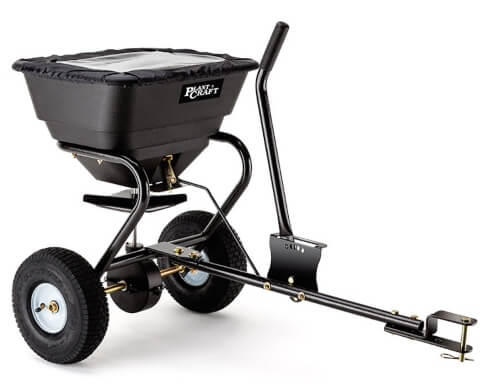
Source: edisons
Plantcraft are a great commercial supplier to the agricultural trades, making sturdy tools that can cope with bigger workloads. The 30klg fertiliser spreader is their smallest commercial fertiliser spreader designed for use on the back of quad bikes and tractors.
The purpose of these spreaders is to quickly and efficiently fertilise fields. Obviously for domestic gardeners, this is significant overkill, unless you have a large estate to manage (in which case, it’s a useful tip that this can be towed on the back of most lawn tractors, so you can mow and fertilise all at once).
The rotary fertiliser spreader is designed to broadcast seed and fertiliser up to 4m in a roughly even spread behind a tractor, so isn’t great for neat rows of crops, but is perfect for cornfields and grain.
Pros
Cons
5. PlantCraft 90kg Tow Behind Broadcast Spreader
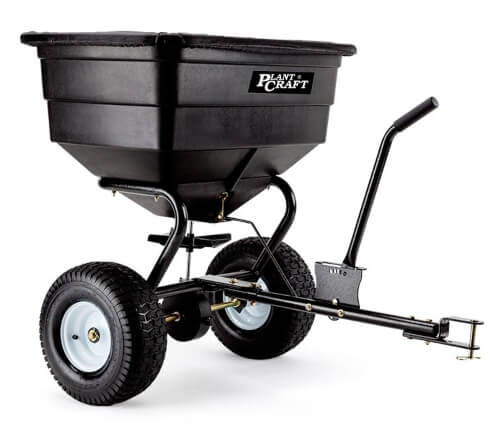
Source: edisons
For well-managed, even farmland, the 90kg Plantcraft model is the best fertiliser spreader you can buy. It’s sturdy and easy to set up, but most importantly it can cope with most surfaces.
It does need to be used at lower speeds as the hopper itself is quite flimsy, but that helps save on weight for the towing vehicle, but its 14” pneumatic tyres are able to cope with the most agricultural ground and can easily bounce over old tyre tracks.
The 90kg (105L) capacity hopper is amongst the biggest tow spreaders on the market, making it an obvious choice for anyone with a significant piece of land to manage.
Pros
Cons
6. Yard Tuff YTF-25SS Shoulder Spreader

Source: amazon
If, like me, you’re a heavy-handed gardener then you’ll need something sturdier than all of the above! The over-the-shoulder broadcast spreader from Yard Tuff is truly built to last, with a 25lb capacity, and a sturdy canvas bag to hold it all, making it comfortable to sit over the shoulder for a long afternoon of spreading.
The gears are all solid steel, so will last for years with minimal wear, but most impressive is the comfort of this oversized fertiliser spreader which is perfect for lawns, reseeding large areas, and fertilising veggie patches in spring.
If you’re going to spend the day reseeding uneven gardens, tools like this are invaluable.
Pros
Cons
Best Fertiliser Spreader Australia
Best Value Fertiliser Spreader


Source: amazon
For gardeners on a budget, that doesn’t always have to mean buying poor-quality tools. Scotts are a great garden tool brand, and the Scotts Mini Broadcast Spreader uses the same fertiliser spreading and seed sowing methods as commercial agricultural spreaders to quickly spread seed over wider areas.
For just over half the price of its nearest competitor, this is a great tool for domestic gardeners looking to fill out lawns fast.
Premium Choice Fertiliser Spreader


Source: amazon
For larger lawns, you can’t go wrong with the ever-trusted Gardena spreader. Gardena are a great garden tool brand, and they’ve built an amazing reputation, not for functionality, but for tools that last, and stand up to all the abuse we gardeners throw at them.
Gardena Fertiliser Spreader is the traditional drop spreader, providing an even, reliable fertiliser and seed distribution that has always, and will always give superior results to broadcast spreading.
Drop spreading is always going to take longer than broadcast spreading, so be mindful of that when buying this if you’re always in a rush, but if you have time for it, then this is the best garden spreader you can buy for large spaces.
Fertiliser Spreader Frequently Asked Questions
What is better, drop or rotary spreader?
Drop spreads are more accurate and waste less fertiliser, with more even results, but rotary (broadcast) spreaders are more efficient and can spread at up to twice the speed.
In terms of quality or results, drop spreaders are the best, but for most gardeners, the convenience of broadcast spreaders is considered a worthy compromise.
What is the difference between a seed spreader and a fertiliser spreader?
Seed spreaders and fertiliser spreaders are generally interchangeable, but drop spreaders will plant seeds too close together for everything other than lawn. For seeding large areas, broadcast spreaders are by far the best choice.
Can you spread topsoil with a fertiliser spreader?
Fertiliser spreaders can be used to cover vegetable seeds with finely sieved topsoil but for most purposes, topsoil is best spread by hand using a shovel, wheelbarrow, or for bigger lawns, opt for electric wheelbarrows.
It might seem old-fashioned but for larger areas, this sort of gardening just needs good old fashioned hard work. Now you are ready to choose the best fertiliser spreader, all that is left is to get the right fertiliser for your lawn.
Check out our Complete Australian Garden Fertiliser 2025 Users' Guide for more info.

Get the Best Fertiliser Spreader Today
Fertiliser spreaders are the under-sung hero of the gardening world and have become completely essential in recent years, especially for our lawns.
As climate change continues to warm the atmosphere, stronger lawns on more nutrient-rich soil are better able to cope with warmer weather and drought than unfed lawns, so buying the best fertiliser spreader can significantly increase the health of your lawn.
Published on April 7, 2022 by Gary Clarke
Last Updated on December 27, 2025




